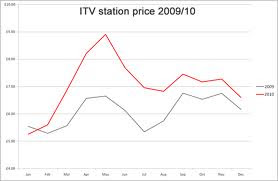The advert for Justin Bieber’s new perfume has every aspect that a teenage girl who loves Justin Bieber would want. This relates well with my audience as I want to target teenage girls as well. There are many ways that the audience for this advert would be drawn into for, firstly and the most important aspect would that the celebrity endorsement having a celebrity releasing a fragrance immediately boosts the rating and the popularity of a certain perfumes by miles. Any girl would want to be in the place of the actress that is present in the advert as she gets very close with Justin in the advert and other teenage girls would want to believe that, that could happen to them. Bringing me on to my second point the brand name ‘Someday’ this could be viewed from my point from before as it could imply that ‘Someday’ the audience could come into the place of that actress.
The advert has a sense of imagination involved as well, merely in the sense of having seeing both people flying around in the clouds. There are many fast cuts throughout this advert as well so that was most defiantly used to keep the audience up to date and attracted for the final shot of the perfume and brand name and the actual advert representing the perfume itself. This advert is an detailed representation of having a specific target audience in mind.










